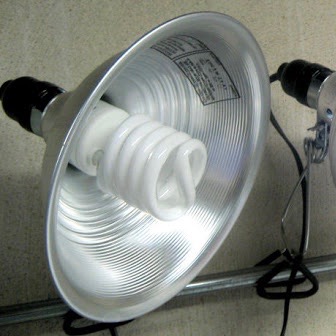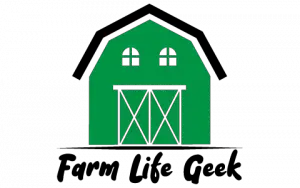Yes, you can use compact fluorescent bulbs to grow plants. These types of bulbs emit a broad spectrum of light that is beneficial for plant growth. They are also more energy-efficient than traditional incandescent bulbs, which makes them a good choice for growing plants indoors.
- Choose the right type of compact fluorescent bulb
- There are many different types of CFLs, so make sure to get one that is specifically designed for growing plants
- Place the CFL near your plant
- The closer the bulb is to the plant, the more light it will receive
- Keep the CFL turned on for 12-16 hours per day
- This will ensure that your plant gets enough light to grow properly
- Monitor your plant closely and make sure it is getting enough water and nutrients
- If it starts to wilt or look unhealthy, move the CFL closer or increase the amount of time it is turned on each day

Credit: www.johnson.k-state.edu
Can I Use Cfl Bulbs As Grow Lights?
CFL bulbs are often used as grow lights because they are relatively inexpensive and emit little heat. However, there are some drawbacks to using CFLs as grow lights. One major drawback is that CFL bulbs do not produce much light in the blue and red wavelengths, which are necessary for plant growth.
Additionally, CFL bulbs have a shorter lifespan than other types of grow lights, so you will need to replace them more often.
Can Regular Fluorescent Lights Be Used for Growing Plants?
Yes, regular fluorescent lights can be used for growing plants. In fact, they are often used in commercial greenhouses. The light emitted by fluorescent bulbs is very similar to sunlight, which makes them ideal for plant growth.
However, there are a few things to keep in mind when using fluorescent lights for plant growth.
First, because the light emitted by fluorescent bulbs is not as intense as sunlight, it is important to provide plants with a relatively large amount of exposure to the bulbs. This can be done by placing the bulbs close to the plants (within a few inches) and keeping them on for long periods of time (12-16 hours per day).
Second, because fluorescent lights emit little heat, they can be placed closer to plants than other types of grow lights (such as incandescent or halogen). This allows for more efficient use of space and also reduces the risk of burning leaves or flowers.
Finally, it is important to remember that different plants have different light requirements.
Some plants need more light than others in order to thrive. When using fluorescent lights for plant growth, it is important to research the specific needs of each plant species in order to ensure that they receive enough light.
Which Cfl Bulbs are Best for Growing?
There are a few things to consider when choosing a CFL bulb for growing:
– The wattage of the bulb: A higher wattage means more light, which is great for plants that need lots of light. However, a higher wattage also means more heat, so it’s important to choose a bulb with the appropriate wattage for your needs.
– The type of CFL: There are two main types of CFLs – soft white and daylight. Soft white bulbs emit a yellowish light, while daylight bulbs emit a whiter light. Choose the type of light based on what your plants need.
– The color temperature: This is measured in Kelvin and indicates how warm or cool the light emitted by the bulb will be. For growing plants, you’ll want to choose a warmer color temperature (around 2700K).
– The CRI: This stands for Color Rendering Index and it indicates how accurately colors will be represented under the light emitted by the bulb.
For growing plants, you’ll want a high CRI (90+).
Is Led Or Cfl Better for Plants?
LED lights are becoming increasingly popular as a means of providing lighting for both indoor and outdoor plants. But which is better for your plants – LED or CFL?
To answer this question, we need to consider a few factors: light intensity, light spectrum, and energy efficiency.
Let’s start with light intensity. Both LED and CFL bulbs produce strong light intensity that is ideal for plant growth. However, LED bulbs tend to produce a more focused beam of light, while CFL bulbs emit a softer, diffused light.
So if you are looking for a light that will penetrate deep into the leaves of your plants (for example, if you are growing plants indoors), then LED is probably the better option. On the other hand, if you want a gentle light that will evenly illuminate an entire room (or greenhouse), then CFL might be better suited.
In terms of spectrum, both LED and CFL bulbs offer a full spectrum of colors – including blue, red, and orange – which is ideal for plant growth.
However, some growers believe that plants grown under LEDs tend to be healthier and more vibrant than those grown under CFLs. This may be due to the fact that LEDs provide a more intense light than CFLs (as we discussed above). Alternatively, it could simply be because LEDs are newer technology so they haven’t had as much time to prove themselves in the horticultural world!
Finally, let’s discuss energy efficiency. Both LED and CFL bulbs use less energy than traditional incandescent bulbs – but LEDs are even more efficient than CFLs. In fact, LEDs use about 75% less energy than incandescents and about 30% less energy than compact fluorescents.
So if you want to save money on your electricity bill AND do something good for the environment, then switching to LED lighting is definitely the way to go!
How to Grow Plants using CFL and Florescent Lights – Growing Indoors Cheap, Easy and Effective
Conclusion
Yes, you can use compact fluorescent bulbs to grow plants. These types of bulbs emit a lot of light at a relatively low cost, making them ideal for growing plants indoors. Compact fluorescent bulbs come in a variety of shapes and sizes, so you can find one that fits your needs.
